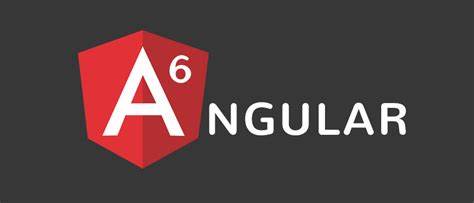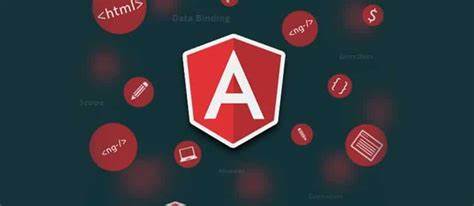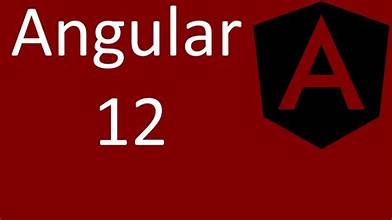Introduction
Overview of Typescript and ES6 JavaScript
- TypeScript Syntax
- Using the TypeScript transpiler
- Setting up Angular 6 and Typescript
Overview of Angular 6’s Parts
- Creating Components
- Databinding and String Interpolation
- Property Binding
- Event Binding
- Two-Way-Databinding
- Data Modelling
- Directives
- Bootstrapping
- Inputs & Outputs
- Angular CLI
Creating Your First Angular Application
- Planning the Application
- Setting Up an Angular Project and App Using the CLI
- Creating a Basic Project Setup Using Bootstrap 4 and Sass
Using Angular 6 Components
- Data Flow
- Working with AppModule
- Working with Custom Components
- Using Templates and Styles
- Using View Encapsulation
- Projecting Content
- Understanding Component Lifecycle and Lifecycle Hooks
- Using ViewChildren and ContentChildren
Databinding in Angular 6
- Overview of Property & Event Binding
- Binding and Assigning Aliases to Custom Properties
- Binding and Assigning Aliases to Custom Events
Working with Directives
- Built-in Directives
- Custom Directives
Angular 6 Services
- Creating a Logging Service
- Creating a Data Service
Using Dependency Injection and Providers
- Injectors, Provider, and Tokens
- Configuring Dependency Injection
- Configuring Your Provider
- Injecting Services into Components, Directives, and Services
Switching Pages with Routing
- Setting Up Routes
- Configuring and Loading Routes
- Understanding the Different Navigation Methods
- Using Parameters in Routes
- Creating Nested Routes
- Using Redirect and Wildcard Routes
- Understanding Route Guards
- Understanding Routing Strategies
Using RxJS to Create and Work with Observables in Angular
- Overview of Observables
- Overview of RxJS
- Building & Using Observables in Angular
Handling Forms
- Using the Template Driven Forms
- Using the Reactive Forms
Using Pipes
- Built-in Pipes
- Async Pipe
- Custom Pipes
Making Calls to External HTTP APIs
Using Angular Modules
Testing the Angular 6 Application
- Using Jasmine for unit testing
Debugging the Application
- Understanding Error Messages in Angular
- Using Sourcemaps to Debug Code in the Browser
- Using Augury
Optimizing the Angular 6 Application
Angular 6 Security
- Authentication
- What should and shouldn’t be written in Angular
Deploying an Angular 6 Application to Production
- Deploying to IIS, Apache, Nginx, etc.
Troubleshooting
Closing Remarks
Introduction
Overview of Typescript and ES6 JavaScript
- TypeScript Syntax
- Using the TypeScript transpiler
- Setting up Angular 7 and Typescript
Overview of Angular 7’s Parts
- Angular CLI
- Components
- Directives
- Inputs and Outputs
- Data Binding and Interpolation
- Event Binding
- Data Modelling
- Bootstrapping
Creating Your First Angular Application
- Planning the Application
- Setting Up an Angular Project
- Using Bootstrap 4 and Sass
Creating a Component
- Understanding the Component Lifecycle
- Data Flow
- Using Templates and Styles
- Projecting Content
- Working with AppModule
- Working with Custom Components
- Using View Encapsulation
- Implementing Lifecycle Hooks
- Using ViewChildren and ContentChildren
Data Binding in Angular 7
- Understanding Property and Event Binding
- Binding and Assigning Aliases to Custom Properties
- Binding and Assigning Aliases to Custom Events
Working with Directives
- Built-in Directives
- Custom Directives
Angular 7 Services
- Creating a Logging Service
- Creating a Data Service
Using Dependency Injection and Providers
- Injectors, Provider, and Tokens
- Configuring Dependency Injection
- Configuring Your Provider
- Injecting Services into Components, Directives, and Services
Switching Pages with Routing
- Understanding the Different Navigation Methods
- Routing Strategies
- Setting Up Routes
- Configuring and Loading Routes
- Using Parameters in Routes
- Creating Nested Routes
- Using Redirect and Wildcard Routes
- Understanding Route Guards
Using RxJS to Create and Work with Observables in Angular
- Overview of Observables
- Overview of RxJS
- Building & Using Observables in Angular
Generating Forms for User Input
- Using the Template Driven Forms
- Using the Reactive Forms
Using Pipes
- Built-in Pipes
- Async Pipe
- Custom Pipes
Making Calls to External HTTP APIs
Using Angular Modules
Testing the Angular 7 Application
- Using Jasmine for unit testing
Debugging the Application
- Understanding Error Messages in Angular
- Using Sourcemaps to Debug Code in the Browser
- Using Augury
Optimizing the Angular 7 Application
Angular 7 Security
- Authentication
- What should and shouldn’t be written in Angular
Deploying an Angular 7 Application to Production
- Deploying to IIS, Apache, Nginx, etc.
Troubleshooting
Introduction
Angular 8
- What is Angular?
- Angular architecture
- Angular 8 features
Preparing the Development Environment
- Installing and configuring Angular 8
Angular Quick Start
- Creating an application
- Adding Bootstrap
- Creating routing
Components and Binding
- Creating and using custom components
- Working with bindings
- Building modules
- Styling components
Developing an Angular Library
- Creating Angular libraries
- Publishing Angular libraries
Services and Dependecy Injection
- Creating a service
- Injecting a service into a component, directive, and service
Form Handling
- Creating a form
- Validating, filtering, and sanitizing form data
Pipes and HTTP Requests
- Transforming output
- Setting up Firebase
- Sending requests
Offline Capabilities
- Adding service workers
- Caching assets and URLs
Testing the Application
Debugging the Application
Deploying the Application
Securing the Application
Troubleshooting
Summary and Conclusion
Introduction
- What is Angular?
- What’s new in Angular 9?
Overview of Typescript and ES6 JavaScript
- TypeScript Syntax
- Using the TypeScript transpiler
- Setting up Angular 9 and Typescript
Overview of Angular 9’s Parts
- Angular CLI
- Components
- Directives
- Inputs and Outputs
- Data Binding and Interpolation
- Event Binding
- Data Modelling
- Bootstrapping
Creating Your First Angular Application
- Planning the Application
- Setting Up an Angular Project
- Creating a mobile friendly UI using Bootstrap 4 and Sass
Creating a Component
- Understanding the Component Lifecycle
- Data Flow
- Using Templates and Styles
- Projecting Content
- Working with AppModule
- Working with Custom Components
- Using View Encapsulation
- Implementing Lifecycle Hooks
- Using ViewChildren and ContentChildren
Data Binding in Angular 9
- Understanding Property and Event Binding
- Binding and Assigning Aliases to Custom Properties
- Binding and Assigning Aliases to Custom Events
Working with Directives
- Built-in Directives
- Custom Directives
Angular 9 Services
- Creating a Logging Service
- Creating a Data Service
Using Dependency Injection and Providers
- Injectors, Provider, and Tokens
- Configuring Dependency Injection
- Configuring Your Provider
- Injecting Services into Components, Directives, and Services
Switching Pages with Routing
- Understanding the Different Navigation Methods
- Routing Strategies
- Setting Up Routes
- Configuring and Loading Routes
- Using Parameters in Routes
- Creating Nested Routes
- Using Redirect and Wildcard Routes
- Understanding Route Guards
Using RxJS to Create and Work with Observables in Angular
- Overview of Observables
- Overview of RxJS
- Building & Using Observables in Angular
Generating Forms for User Input
- Using the Template Driven Forms
- Using the Reactive Forms
- Creating custom validation
- Validating, filtering, and sanitizing form data
Using Pipes
- Transforming output
- Built-in Pipes
- Async Pipe
- Custom Pipes
Making Calls to External HTTP APIs
Using Angular Modules
Testing the Angular 9 Application
- Using Jasmine for unit testing
- Using Protractor for end-to-end testing
Debugging the Application
- Understanding Error Messages in Angular
- Using Sourcemaps to Debug Code in the Browser
- Reading TypeScript Compilor diagnostics
- Using Augury
Optimizing the Angular 9 Application
- Understanding the Ivy compiler, runtime, and renderer
- Reworking the code
- Reducing bundle size and eliminating dead-code
Angular 9 Security
- How authentication works
- Using JWT authentication
- What should and shouldn’t be written in Angular
Deploying an Angular 9 Application to Production
- Deploying to IIS, Apache, Nginx, etc.
Angular 9 Best Practices
Troubleshooting
Summary and Conclusion
Introduction
- What is Angular?
- What’s new in Angular 10?
Overview of Typescript and ES6 JavaScript
- TypeScript Syntax
- Using the TypeScript transpiler
- Setting up Angular 10 and Typescript
Overview of Angular 10’s Parts
- Angular CLI
- Components
- Directives
- Inputs and Outputs
- Data Binding and Interpolation
- Event Binding
- Data Modelling
- Bootstrapping
Creating Your First Angular Application
- Planning the Application
- Setting Up an Angular Project
- Creating a mobile friendly UI using Bootstrap 4 and Sass
Creating a Component
- Understanding the Component Lifecycle
- Data Flow
- Using Templates and Styles
- Projecting Content
- Working with AppModule
- Working with Custom Components
- Using View Encapsulation
- Implementing Lifecycle Hooks
- Using ViewChildren and ContentChildren
Data Binding in Angular 10
- Understanding Property and Event Binding
- Binding and Assigning Aliases to Custom Properties
- Binding and Assigning Aliases to Custom Events
Working with Directives
- Built-in Directives
- Custom Directives
Angular 10 Services
- Creating a Logging Service
- Creating a Data Service
Using Dependency Injection and Providers
- Injectors, Provider, and Tokens
- Configuring Dependency Injection
- Configuring Your Provider
- Injecting Services into Components, Directives, and Services
Switching Pages with Routing
- Understanding the Different Navigation Methods
- Routing Strategies
- Setting Up Routes
- Configuring and Loading Routes
- Using Parameters in Routes
- Creating Nested Routes
- Using Redirect and Wildcard Routes
- Understanding Route Guards
Using RxJS to Create and Work with Observables in Angular
- Overview of Observables
- Overview of RxJS
- Building & Using Observables in Angular
Generating Forms for User Input
- Using the Template Driven Forms
- Using the Reactive Forms
- Creating custom validation
- Validating, filtering, and sanitizing form data
Using Pipes
- Transforming output
- Built-in Pipes
- Async Pipe
- Custom Pipes
Making Calls to External HTTP APIs
Using Angular Modules
Testing the Angular 10 Application
- Using Jasmine for unit testing
- Using Protractor for end-to-end testing
Debugging the Application
- Understanding Error Messages in Angular
- Using Sourcemaps to Debug Code in the Browser
- Reading TypeScript Compilor diagnostics
- Using Augury
Optimizing the Angular 10 Application
- Reworking the code
- Reducing bundle size and eliminating dead-code
Angular 10 Security
- How authentication works
- Using JWT authentication
- What should and shouldn’t be written in Angular
Deploying an Angular 10 Application to Production
- Deploying to IIS, Apache, Nginx, etc.
Angular 10 Best Practices
Troubleshooting
Summary and Conclusion
Introduction
- What is Angular?
- What’s new in Angular 11?
Overview of Typescript and ES6 JavaScript
- TypeScript Syntax
- Using the TypeScript transpiler
- Setting up Angular 11 and Typescript
Overview of Angular 11’s Parts
- Angular CLI
- Components
- Directives
- Inputs and Outputs
- Data Binding and Interpolation
- Event Binding
- Data Modelling
- Bootstrapping
- Experimental Webpack
Creating Your First Angular Application
- Planning the Application
- Setting Up an Angular Project
- Creating a mobile friendly UI using Bootstrap 4 and Sass
Creating a Component
- Understanding the Component Lifecycle
- Data Flow
- Using Templates and Styles
- Projecting Content
- Working with AppModule
- Working with Custom Components
- Using View Encapsulation
- Implementing Lifecycle Hooks
- Using ViewChildren and ContentChildren
Data Binding in Angular 11
- Understanding Property and Event Binding
- Binding and Assigning Aliases to Custom Properties
- Binding and Assigning Aliases to Custom Events
Working with Directives
- Built-in Directives
- Custom Directives
Angular 11 Services
- Creating a Logging Service
- Creating a Data Service
Using Dependency Injection and Providers
- Injectors, Provider, and Tokens
- Configuring Dependency Injection
- Configuring Your Provider
- Injecting Services into Components, Directives, and Services
Switching Pages with Routing
- Understanding the Different Navigation Methods
- Routing Strategies
- Setting Up Routes
- Configuring and Loading Routes
- Using Parameters in Routes
- Creating Nested Routes
- Using Redirect and Wildcard Routes
- Understanding Route Guards
Using RxJS to Create and Work with Observables in Angular
- Overview of Observables
- Overview of RxJS
- Building & Using Observables in Angular
Generating Forms for User Input
- Using the Template Driven Forms
- Using the Reactive Forms
- Creating custom validation
- Validating, filtering, and sanitizing form data
Using Pipes
- Transforming output
- Built-in Pipes
- Async Pipe
- Custom Pipes
Making Calls to External HTTP APIs
Testing the Angular 10 Application
- Using Jasmine for unit testing
- Using Protractor for end-to-end testing
Debugging the Application
- Understanding Error Messages in Angular
- Using Sourcemaps to Debug Code in the Browser
- Reading TypeScript Compilor diagnostics
- Using Augury
Optimizing the Angular 11 Application
- Reworking the code
- Reducing bundle size and eliminating dead-code
Angular 11 Security
- How authentication works
- Using JWT authentication
- What should and shouldn’t be written in Angular
Deploying an Angular 11 Application to Production
- Deploying to IIS, Apache, Nginx, etc.
Angular 11 Best Practices
Troubleshooting
Summary and Conclusion
Introduction
- What is Angular?
- What’s new in Angular 12?
Overview of Typescript and ES6 JavaScript
- TypeScript Syntax
- Using the TypeScript transpiler
- Setting up Angular 12 and Typescript
Overview of Angular 12’s Parts
- Angular CLI
- Components
- Directives
- Inputs and Outputs
- Data Binding and Interpolation
- Event Binding
- Data Modelling
- Bootstrapping
- Experimental Webpack
Creating Your First Angular Application
- Planning the Application
- Setting Up an Angular Project
- Creating a mobile friendly UI using Bootstrap 4 and Sass
Creating a Component
- Understanding the Component Lifecycle
- Data Flow
- Using Templates and Styles
- Projecting Content
- Working with AppModule
- Working with Custom Components
- Using View Encapsulation
- Implementing Lifecycle Hooks
- Using ViewChildren and ContentChildren
Data Binding in Angular 12
- Understanding Property and Event Binding
- Binding and Assigning Aliases to Custom Properties
- Binding and Assigning Aliases to Custom Events
Working with Directives
- Built-in Directives
- Custom Directives
Angular 12 Services
- Creating a Logging Service
- Creating a Data Service
Using Dependency Injection and Providers
- Injectors, Provider, and Tokens
- Configuring Dependency Injection
- Configuring Your Provider
- Injecting Services into Components, Directives, and Services
Switching Pages with Routing
- Understanding the Different Navigation Methods
- Routing Strategies
- Setting Up Routes
- Configuring and Loading Routes
- Using Parameters in Routes
- Creating Nested Routes
- Using Redirect and Wildcard Routes
- Understanding Route Guards
Using RxJS to Create and Work with Observables in Angular
- Overview of Observables
- Overview of RxJS
- Building & Using Observables in Angular
Generating Forms for User Input
- Using the Template Driven Forms
- Using the Reactive Forms
- Creating custom validation
- Validating, filtering, and sanitizing form data
Using Pipes
- Transforming output
- Built-in Pipes
- Async Pipe
- Custom Pipes
Making Calls to External HTTP APIs
Testing the Angular 12 Application
- Using Jasmine for unit testing
- Exploring Protractor alternatives for end-to-end testing
Debugging the Application
- Understanding Error Messages in Angular
- Using Sourcemaps to Debug Code in the Browser
- Reading TypeScript Compilor diagnostics
- Using Augury to debug inside a browser
Optimizing the Angular 12 Application
- Reworking the code
- Reducing bundle size and eliminating dead-code
Angular 12 Security
- How authentication works
- Using JWT authentication
- What should and shouldn’t be written in Angular
Deploying an Angular 12 Application to Production
- Deploying to IIS, Apache, Nginx, etc.
Angular 12 Best Practices
Troubleshooting
Summary and Conclusion


